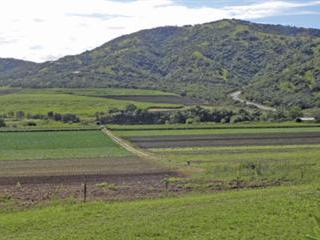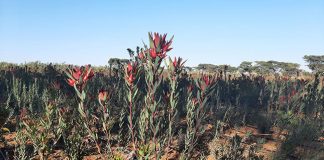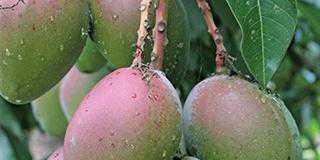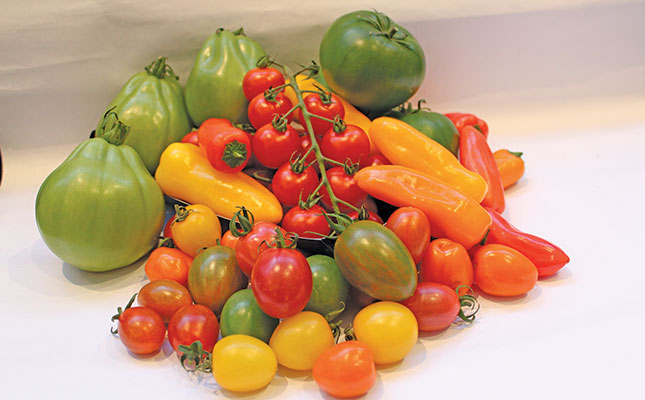
Johnny Sfaelos has been farming in the Umkomaas Valley, near Richmond in KwaZulu-Natal since 1960. Initially farming with Boer goats and beef cattle on the 300ha farm Mimosa Brae, he bought the nearby 15ha farm Valley View in 1980, where he began vegetable cultivation. A true man of the soil, when Johnny developed back problems, he couldn’t bear to make a clean break from farming.
Instead he downsized, selling Mimosa Brae in 2001 and continued with vegetable production at Valley View, which spills out at the feet of the home he shares with his wife Tonya. “I can’t sit and do nothing,” says 68-year-old Johnny. “I am a baker by trade. My dad owned the Richmond bakery, which he sold in 1960. I decided to start farming the following year, the year I turned 18.
I had no experience at all. I learned from books and reps and through trial and error. And I make a very good living off this smallholding. When one crop comes off the land, the next goes in. I make every square inch of ground work for me.” Johnny cultivates only 7,5ha. The crop rotation includes 2,5ha early maize, 3ha butternut and 2ha tomatoes planted in August and harvested by December. This is followed by another 2ha tomato crop in January, which is harvested by April/May.
The 4ha tomatoes yield an average of 65t/ha to 70t/ha, while the maize annually yields 4 500 dozen green mealie cobs per hectare and 28t to 30t butternut per hectare. Cabbage is the winter crop, planted in late February for picking from June to October. About 220 000 cabbage seedlings are planted annually, from which about 200 000 cabbages are harvested.
Most of the fresh produce is collected from the farm by buyers in the former Transkei. “When I have excess produce, I take it to the market in Ixopo 30km away. But other than that, everything is collected from the farm. It saves me fuel, time and vehicle maintenance costs. I sold my trucks because I don’t need them.”
Climate
The average summer temperature in the valley is 40°C, although it occasionally rises to a sweltering 46°C. To deal with the excessive heat, he tries to avoid planting in January and February. “I only plant tomatoes in January so they start fruiting when the temperature goes down a bit. I irrigate in the morning to cool the soil and again in the afternoon. I don’t irrigate in the heat of the day because the water drops can act as a magnifying glass and burn the plants. But even though it gets hot, we manage here.”
Mild frosts occur and the valley receives only about 650mm a year. “The valley is quite dry but I don’t really worry about it because I draw irrigation water from the Mkomazi River. The dry climate also means we can grow tomatoes without having to spray excessively for pests and disease. I have everything I need on the farm: good staff, good land and plenty of water.”
While being close to the river is an advantage when it comes to irrigation, the farm was flooded in 1987.
“That caused a lot of damage but they reckon flooding here will happen only once every 200 years. The topsoil was washed away and my land looked like a beach. I sent soil samples off to Cedara. The potassium, which should have been one part per million (ppm), was 250ppm. The phosphate was virtually zero and it should have been at least 40ppm. Cedara said the soil was not suitable for growing fresh produce.”
Not one to take no for an answer, Johnny removed the ‘beach sand’ and ploughed in tons of chicken litter. “I didn’t have an
income for about six months but I won the The Agronomy Cup from Windmill Fertilizers that same year,” says Johnny. “Where there is a will, there is a way. It is a lovely farm now and it delivers the goods. “When I can get my hands on chicken litter, I use it at a rate of about 3t/ha and plough it in. It contains potassium and releases nitrogen in small amounts. It improves soil fertility and pH. I also use about 1t lime/ha once a year. It has had fantastic results on my crops.”
Soil compaction
Throughout his farming career of 52 years, Johnny has been avoiding the use of heavy machinery as it compacts the soil and affects water infiltration. He ploughs with a tractor only once every six or seven years but rips and discs before every crop. “Land preparation is very important. I have a Lely power harrow which makes beautiful seedbeds. It breaks up all the clods and rips about 60cm deep which allows for good drainage. I irrigate straight after planting to get the air out of the ground and ensure good contact between the soil and roots.”
He says he takes great care of his plants. “I classify a seedling as a baby. If you give it a good start in life, it won’t give problems. But if the baby is given a hard start, and fed sugar water instead of milk, it won’t grow.” When it is time to
spray, workers go in with knapsack sprayers. “It can be as wet as all hell and machines and tractors can’t get into the lands, but feet can. I mark out the maize and butternut rows with my quad bike because it has flotation tyres and does not cause compaction.”
While hand spraying minimises soil compaction, it also helps keep costs down. He caps chemical costs at R12 to R15 per 8kg box of tomatoes, depending on yield. The average tomato yield is one 8kg box per plant, although this can vary from 5kg to 9kg depending on the season. “It is easy to spray too much when spraying by machine. This leads to wasteful run-off. You have to watch your pennies in this game. And you have to learn from your mistakes.’’
Johnny also adapted his irrigation equipment to counteract rising electricity costs. “I have bought more piping and upgraded to a 18,5kW pump. Now I can use 60 sprinklers instead of 20, so when switched on, it covers much more ground at a time. The whole farm can receive half an inch of water in two days. This saves electricity.” The farm is irrigated by overhead irrigation that differs depending on heat, rainfall and the soil structure of each land.
‘‘I don’t like putting too much water down because it leaches out fertiliser which is wasteful. I prefer putting down a smaller amount of water, maybe twice a week if I don’t get rain, or once a week if I do. A plant can only take up so much water.”
Ready-made fertiliser, 2:3:4 (30), is applied at a rate of about 300kg/ha at planting for cabbages and tomatoes.
“That is more than enough for a plant. You can always add more later but you can’t take it back. If you overfeed, you get vegetative growth and if you underfeed, you get stunted growth. As the crop grows, it receives two or three side-dressings of ASN. The cabbages which mature in 85 days will get two side-dressings about one month apart. But a long-term cabbage which matures at about 100 to 105 days will get three side-dressings about three weeks apart.”
Johnny is vigilant about applying trace elements such as boron and molybdenum. Spraying takes place once a week for early blight, late blight, bacterial speck and spot, leaf miner and white fly, but chemicals are not used before harvesting.
His determination to keep a close eye on his farm, coupled with his perfectionism, means Johnny has had very little time off the farm. “I don’t know what holidays are. When Tonya and I got married 45 years ago, it took us 14 years to take our honeymoon. It is all work, work, work.”
But he says, his days on the farm are numbered. “It is time to sell the farm. My health is against me. If I can’t drive my own tractor, I would rather sell up. But it will be difficult to say goodbye.”
Contact Johnny Sfaelos on 039 834 2471.













